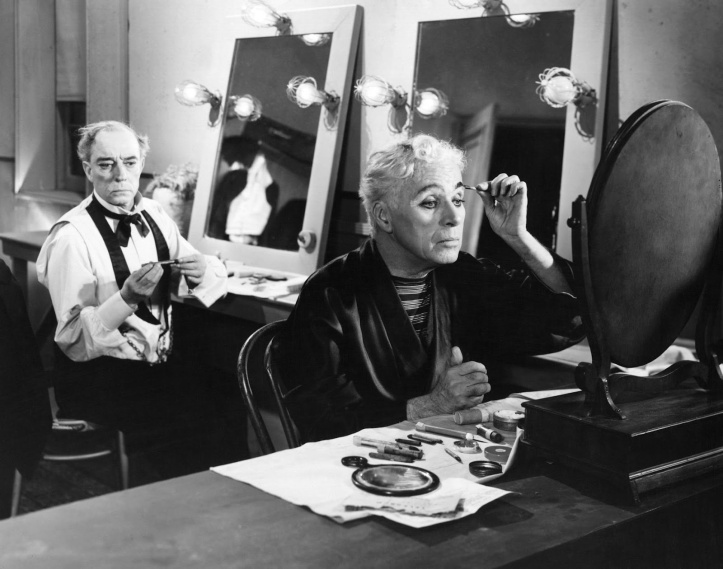Today is the anniversary of the release date of Charlie Chaplin’s last indisputably great movie Limelight (1952).
Limelight was a victim of history twice over;. If not for two accidents of history one imagines the film would have been hailed by both press and public upon its release. But that’s not what happened. Chaplin’s last huge success had been The Great Dictator, over a decade earlier. Unfortunately, he had followed it up with Monsieur Verdoux (1947), a movie so deeply unpopular with the American public it single-handedly tanked what had theretofore been a spotless, almost infallible career. Chaplin was all but pilloried in the wake of Verdoux’s release, which is particularly a shame since the public was likely to have embraced his next film as Chaplin’s Triumphant Return if circumstances hadn’t prejudiced them against even checking it out.

Limelight (1952) is not so much a comedy as a drama about a comedian – a down on his luck, aging clown with an alcohol problem, someone who used to be great but now can’t even get work. He pulls himself together to become the mentor and salvation of a suicidal ballet dancer played by Claire Bloom. Along the way there are bits of pantomime as Chaplin’s music hall performer (named Calvero, and quite distinct from his default cinematic character, the Tramp) takes the stage. We finally get to see Chaplin’s flea circus routine (previously filmed in fragments in By the Sea and The Professor) in its entirety. And there is the tour de force comedy scene between him and Buster Keaton, the only time the pair appeared together on film. Also in the cast: Chapin’s son Sydney, as well as his younger children Geraldine, Josephine, Charles Jr, and Michael (who got an even bigger role in A King in New York and wrote this ridiculous book); Chaplin’s half-brother Wheeler Dryden (as the doctor); Nigel Bruce (Watson from the Rathbone Sherlock Holmes movies) as a theatrical producer; a young Norman Lloyd (veteran successes with Orson Welles and Hitchcock); and Snub Pollard, who, like Keaton was a silent comedy star who had surprisingly never appeared with Chaplin (he was the key member of the Harold Lloyd stock company at Roach, and also starred in his own shorts). Edna Purviance can be seen in the film as an extra; Chaplin’s wife Oona actually doubled for Bloom in a ballet sequence.
By all rights, this should have been Chaplin’s last film, as was originally planned. His artistic reputation would have been intact, the story caps his myth, and it is the only picture in which his character dies. Talk about Oscar bait! But as great as Limelight is (and the script and performances are terrific, too) the film never had a chance. As Chaplin sailed to England for the promotional tour, he received a wire saying that his re-entry permit to return to the U.S. had been revoked. Rather than suffer the indignity of reapplying, he spent the remainder of his life in American exile in Switzerland. (This is the second accident of history I mentioned. This mishigas meant Limelight was never properly promoted or distributed in the U.S. after its initial release, leaving critics and audiences to discover it gradually over the ensuing decades).
To learn more about comedy film history, including great Chaplin films like “Limelight” please check out my new book: Chain of Fools: Silent Comedy and Its Legacies from Nickelodeons to Youtube, just released by Bear Manor Media, also available from amazon.com etc etc etc.

